It was May 2014 and as the quality assurance manager for a pharmaceutical company, I had just hosted an inhouse audit by the TGA (Therapeutic Goods Administration). The firm was smaller than others I had worked for, and quality assurance was an aspect of the business that needed a lot of work. Over the twelve months I’d worked for the company, I’d rewritten its quality systems to ensure compliance with current regulations. Thankfully, the evidence of the new systems and procedures was enough for the TGA to see that the company was stepping up with quality assurance, and thus the company was allowed to retain its manufacturing licence.
My greatest challenge, however, was enforcement. It was my neck on the line if anything went wrong, and people’s lives were at stake. The culture of any company is determined by the leaders. In this case the owners of the company didn’t take quality assurance seriously and as a result neither did the staff. I was seen as a nuisance, so I quit.
It wasn’t the first time I’d quit my job – in fact I’d made quite a habit of it to support my lifestyle of adventuring. I’d work hard for a year or two, save up enough coin to survive another year living out of a backpack and then hit the road. I am a stickler for detail, as you know from my posts. I was good at my job of spotting problems and improving systems and procedures, so I was always able to get more work whenever the cash ran out. Each new role was a pay grade or two up from where I’d left off – what’s not to love about that?
This latest “quitting” episode was different
Quitting the small pharmaceutical firm sparked a sense of “I’m done with this, it’s time for something new”. I lamented that if I had my time again, I’d be a landscape gardener.
My contribution to the healthcare industry should have given me a better feeling than it did. The premise of healthcare is that it prevents or treats health problems, and that was something I wanted to continue to do. With respect to food, one of the best ways to optimise health is through eating plenty of fresh fruit and vegetables. I realised that I could combine all the skills and knowledge I had gained from the healthcare industry with my greatest passion: gardening and growing food.
Growing healthy food. Now that’s where it’s at!
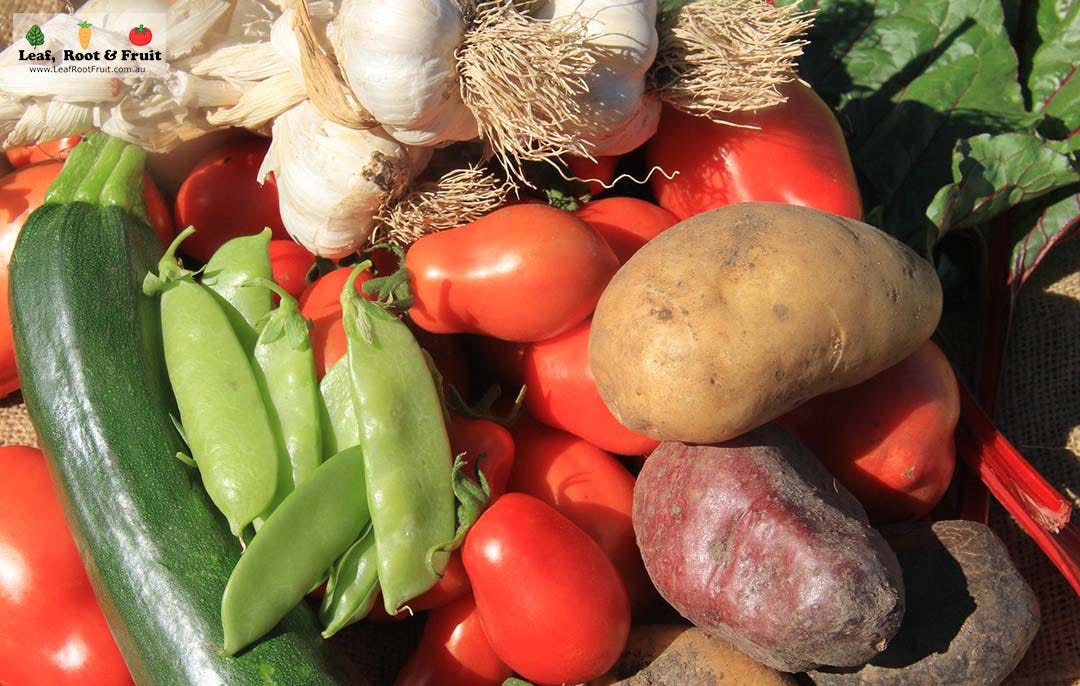
I’ve loved growing food ever since my childhood. Some of my earliest memories are of gardening. My grandparents kickstarted it all, Pa with his orchid collection and Gran with her amazing vegetable patch. Her strawberries were to die for. Their quarter-acre block in Glenroy was an oasis. The greengage plums from the tree in their backyard was an annual summer highlight. I still can’t work out how they used to pick so much fruit without netting the tree. Different times, I suppose. The greengage tree that now stands in my own orchard was planted in their honour.
Growing up on a dairy farm, I spent much of my teenage years tending an epic vegetable patch. Sweetcorn and tomatoes, onions and pumpkins: I grew them all on our scarce supply of tank water. No one else in the family took much interest in the patch that I created. But it felt special, being able to contribute food to the dinner table. There’s something magical about planting a seed and growing food. I really get a kick out of it.
When I lived in London in my late twenties, my housemates would always snigger at the crazy kid from Oz who would hit the pub most nights but then be up early the next day to tend his tomatoes that were struggling on in growbags on the patio.
In the end, it was an easy choice
I decided to trial a new approach to the pattern of two years working and one year travelling that I’d enjoyed for the previous decade. Rather than going travelling again, I’d invest the time and money in starting my own business. I’d give it twelve months. If it worked – great, cycle broken. If it didn’t, there was always the corporate world to go back to with my tail between my legs. I had nothing to lose.
The rest is history
This month marks the 10-year anniversary of Leaf, Root & Fruit. I haven’t left the country since 2014. I have two gorgeous kids and an amazing partner. I live on a stunning 6-acre block in the small township of Kyneton. Life has changed, and definitely for the better.
I have supported and inspired thousands of folks to grow their own food in the last decade. It’s been so much fun. But it has also been a lot of hard work. I’ve laughed, cried, and collapsed with exhaustion so many times running this business. It’s been quite the rollercoaster.
But it beats the corporate world any day.
A fledgling takes flight
I started Leaf, Root & Fruit as a gardening business that focused on growing food. A regular garden maintenance service for your vegetable patch. The idea was my clients could just wander out and pick their produce whenever they wanted to without having to get their hands dirty.
I thought I knew a lot about growing food, but I quickly learnt just how little knowledge I had. Growing food on the farm was easy – there were hardly any pests to contend with. Just plant some seeds, water them and voila, food!
Growing in the inner eastern suburbs of Melbourne had all sorts of problems: pesky possums, rampant powdery mildew, rats, and all other manner of things that halted productivity. However, each failure brought about an opportunity to learn something new.
I see patterns
I think it’s an innate ability (I’m probably on some behavioural spectrum) but corporate world quality assurance certainly heightened my ability to notice patterns. My childhood spent playing on the farm, camping at the beach, and immersed in nature in so many ways also helped with this.
Tending 30-odd food gardens across Melbourne enabled me to see patterns in gardening:
The silverbeet all went to seed in the same week (thanks photoperiodism).
Aphids would be rampant in every single garden one week. Three weeks later they’d be gone and replaced by hundreds of ladybirds.
I’d spray some peach trees for curly leaf and not others. Regardless of the treatment some years they all got it, others none of the trees did.
I began to appreciate the rhythms of nature. Pest attack was inevitable at certain times of the year but predictable (I’m looking at you, white cabbage butterfly in March). Therefore, changes to timing of certain activities enabled increased success (Ha! Just you try and get through that insect netting to my lovely brassicas now!).
Success leads to growth
I became very good at growing food. I also got good at mowing lawns, because apparently no one wants to pay one person to tend the vegetable patch and another person to mow the grass. So I took on some staff to help with the routine garden maintenance.
I started installing cypress garden beds, which in turn evolved into small landscaping jobs. My confidence grew, as did the numbers on the payroll. I began designing entire properties. It was fun and I got great feedback from my clients.
At some point I looked up and realised I was wrestling with a monster
In 2019 (you know, that final year of pre-covid normality), Leaf, Root & Fruit hit its peak. I had six employees, a solid waiting list of upcoming work and an operations manager to keep things ticking over. But every day I was pinging from client to client, always on the road, chasing new work to keep those six employees paid. I had a commercial lease on our depot in Burwood. Little mistakes (aka learning opportunities) I’d been making in clients’ gardens since 2014 had turned into one big one: growing too quickly. The business posted a big loss, and I lost a lot of money that year.
It stopped being fun. I was burnt out, struggling to keep the business ticking over. At the time, my son Angus was two. My family deserved better. It was time for another “quit and change”.
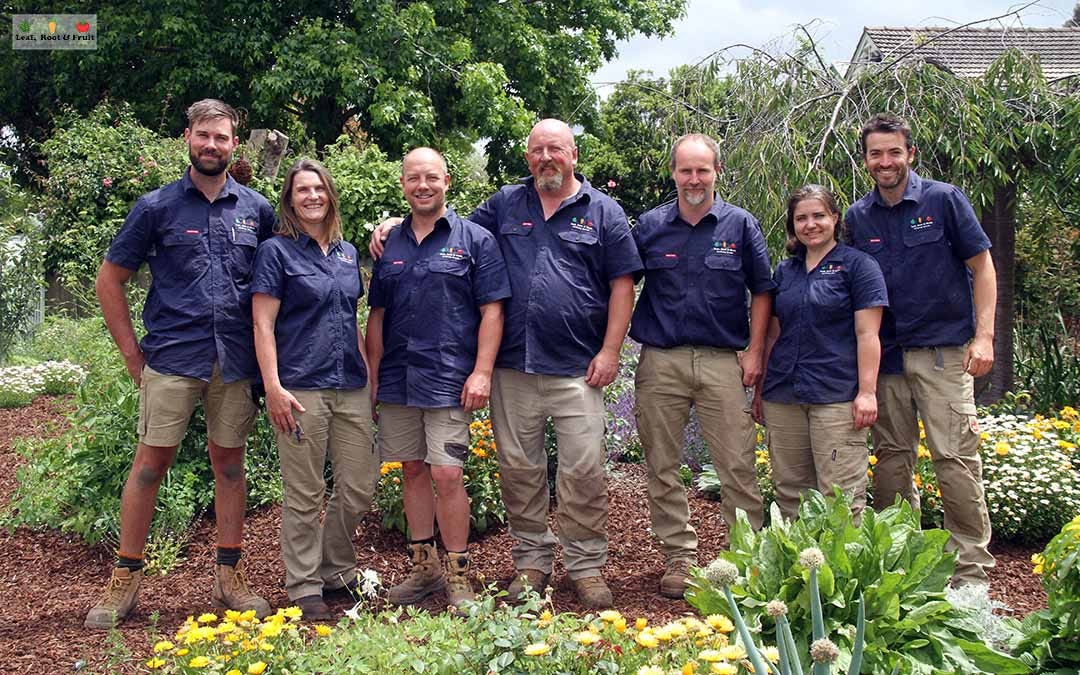
The only way is up
Hitting rock bottom enables you to bounce back up again, which is exactly what I did.
In hindsight, the business grew too quickly. A small business has lower overheads. You can be nimble and easily adjust to change when you’re small. My staff were wonderful, and we had some great discussions. Most of them helped me to create a new model and to start again. I mentored some of them to start their own businesses, each one as a sole trader. I passed on plenty of work to ensure their businesses thrived from day one. In return they made sure they were available whenever I needed them “on the tools”.
This “informal co-op” model has served us well, and I like to think the world is all the better for the four little gardening businesses that have evolved from it. Most importantly, it has resulted in more hands in the soil with more folks driving positive change by growing their own food. That’s my passion and that’s why I started Leaf, Root & Fruit.
Then there’s the toilet paper
I loved the pandemic. By the time it hit in March 2020, we were safely tucked up, living outside of the ring of steel with a two-month-old baby (Emily, our second child). Toilet paper was flying off the shelves and all of a sudden everyone wanted to grow their own food. I got busy. Very busy. I even wrote a blog post that went viral and gained me some press.
But I loved the pandemic because I got paid to stay at home (thanks Job Keeper) and work in my garden. I played with the kids and just enjoyed the break from the Leaf, Root & Fruit monster that had erupted in the years previously. It was just the reset that I needed.
In my own garden is where I found balance
I still love supporting folks to grow food. So I still run the business (and it helps to pay the bills).
But in early 2023, I realised that my monthly newsletter, which I’d been publishing since 2014, was becoming a millstone around my neck.
I was a victim of my own success. You see, the more subscribers you have, the more the Mailchimp email platform charges you. After the uptick in subscribers during the pandemic, I was now paying $160 a month in Mailchimp fees to send out my free newsletter. Each edition takes me two to three days.
Five years ago, that time and money was quickly repaid with the amount of landscaping work that it brought in.
In 2023 the cost–benefit analysis did not look anywhere near as good for the newsletter. Each edition sold a handful of workshop tickets and maybe a few consultations. The newsletter no longer paid its way.
What if I just stop sending out the newsletter?
I get amazing feedback from you, my readers. But in early 2023 I thought to myself, I could save $160 and gain two to three more days a month to hang with my kids by just not sending it anymore.
Gosh, it was a tough call. I’d spent nine years cultivating that mailing list. Folks sent me lovely feedback on it, saying things like:
“I'd just like to say, I avidly look forward to your emails each month. Thank you for all of your advice…. you guys rock!”
David S.
“Thanks Duncan! It's so helpful to hear about the things that go wrong even for professional gardeners, and how you deal with the issues. I learn more from this than all the photos of perfect plants on instagram!
Beth S.
I decided that I couldn’t let my readers down. I couldn’t just throw it away.
Enter a new era for Leaf, Root & Fruit
A chance conversation at the monthly Kyneton Permaculture at the Pub group led me down the path to Substack, and here we are. I’m now a professional writer.
I’m still running workshops (a handy second income source without having to leave the property). But mostly, I’m a writer. I’m loving it. I feel that my writing has really developed over the past 12 months.
I’ve engaged a professional editor (thanks Kerryn) who has helped to polish my writing. Before that it was my superstar of a Mum who edited the newsletter. A big shout-out and a huge thanks for this effort over nine years to my Mum, Denise. Each month she’d engage her Luddite technology skills to weed out all the typos and then insert lots and lots of commas. I’m in my forties, a professional writer, and I still don’t understand commas. This is further confused by the fact that my new editor, Kerryn, takes most of mine out and hardly ever adds any new ones. If you’ve noticed far fewer commas lately, that’s why. English is an evolving language, apparently. [Editor’s note: I added a discretionary comma before “apparently” just to prove Duncan wrong.]
So where to now?
That’s partly up to you, dear reader! I see feedback as a gift. This viewpoint lands me in all sorts of strife as I bestow my gifts on those around me. I have the best of intentions, but the recipients of my feedback don’t always see it that way. Anyway, please, hit me with it. What in my writing has resonated with you? What would you like to see more of? What do you need to grow more and better food?
Comments have been enabled on this post for free subscribers as well as paid.
The show will go on
I’ve found a way. The monthly planting guide and garden update will continue to hit your inbox every month. It will be free, and it will always remain free. I hope that you enjoy reading it as much as I enjoy putting it together.
Weeding is a great opportunity to reflect, and you can grow an awful lot of weeds on 6 acres. After much reflection I know I’m right where I need to be, doing what I was destined to do.
The sunsets in this part of the world are great. The soil is improving with each hot compost pile. The fruit trees are growing. My family is thriving.
Life’s good.
Thanks for reading.


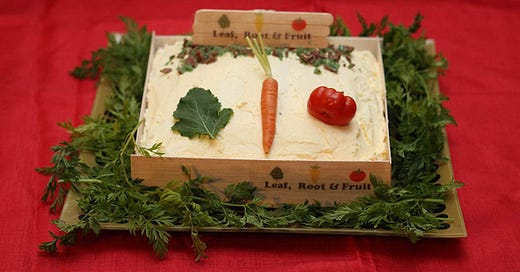


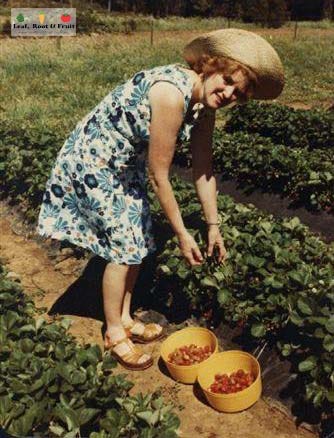
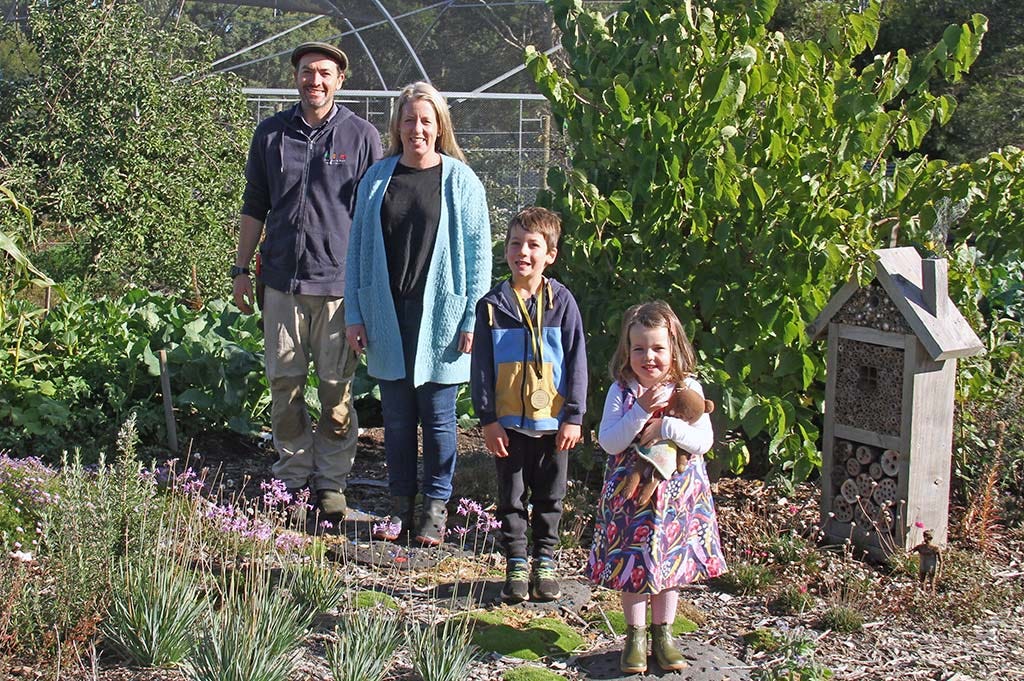
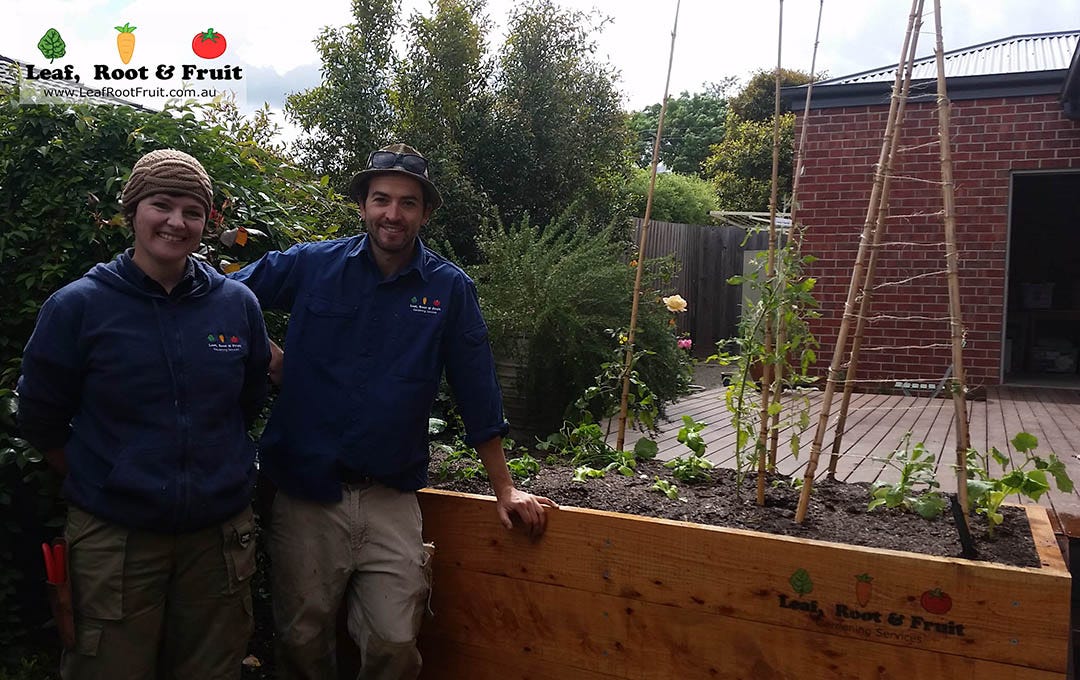
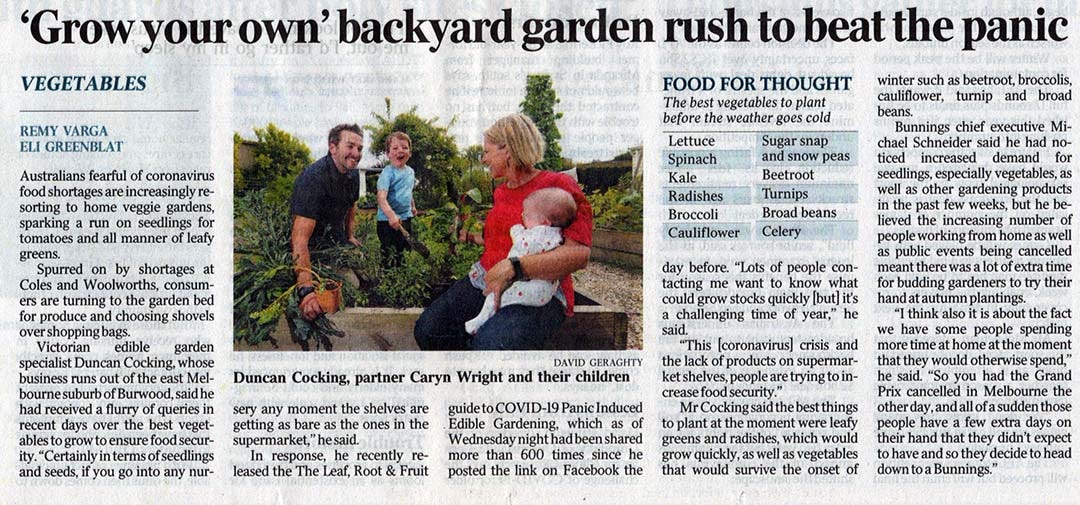
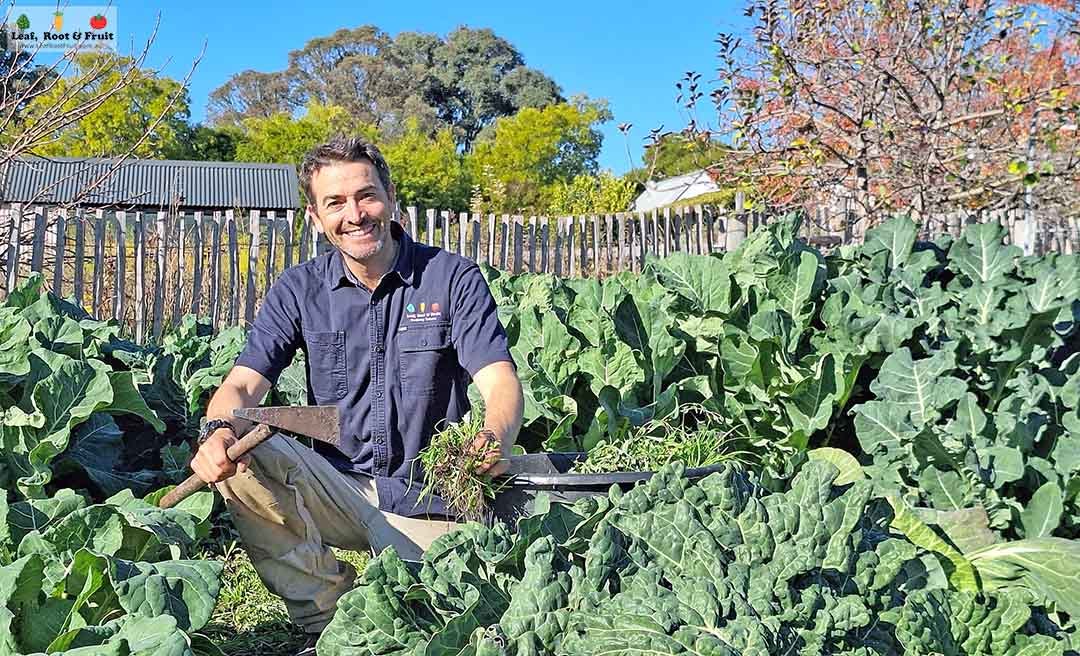
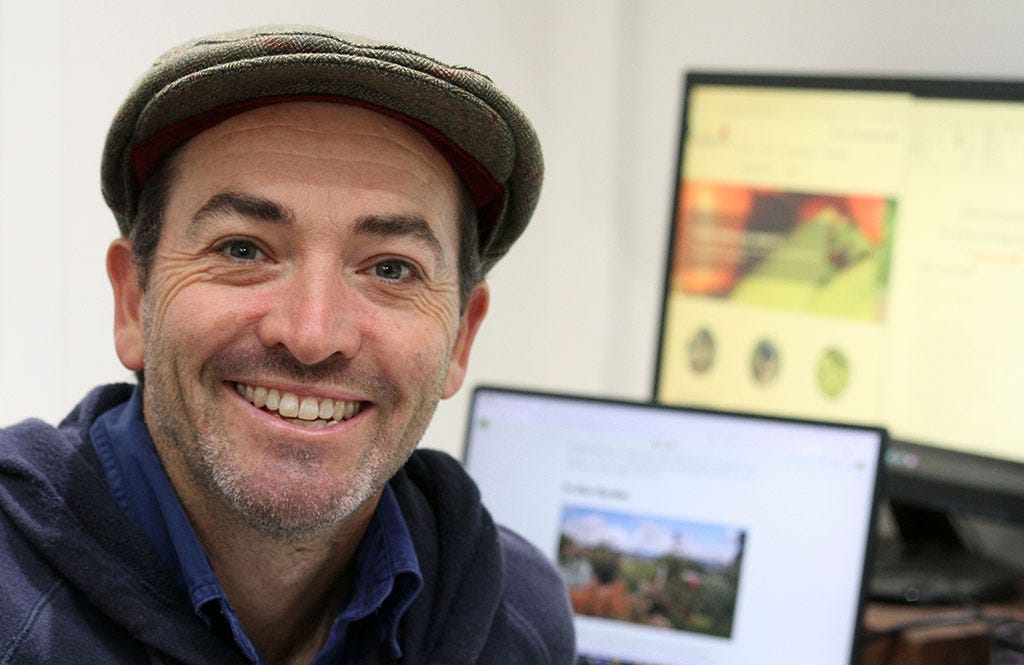

Hi, After my husband died I downsized to a smaller block, closer to family in Melbourne’s west. I’d been growing a few veggies previously but now I have set out the small garden to veggies. My farming ancestors have emerged! Now in my second season of brassicas and beware the thrips can get through the insect netting! I caught them early and used a natural spray and all is looking good. Lots of lovely fresh veg! I do miss my fruit trees though! Enjoying your newsletter enormously and learning heaps. Keep ‘em coming please!
Happy 10th Birthday, Duncan and to the whole team of Leaf, Root & Fruit! Keep the posts coming! :)
Just a slight typo here "Each edition me takes two to three days."